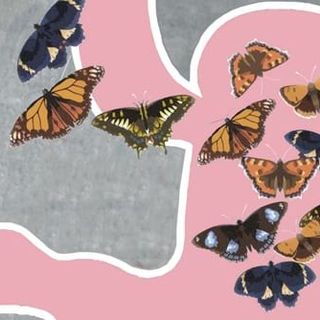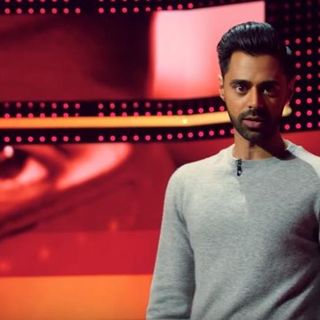
Airlines’ Obsession With the Flight Attendant Look Obscures Crews’ Actual Work
“You don’t have to look pretty to save someone’s life.”

Anisa Pereira was 19 when she was completely taken with the glitz and glamour of the flight attendant’s life. More than getting to fly off to distant lands, she wanted to don that pretty uniform. Chasing the aesthetic, she started flying with Jet Airways, servicing Indian passengers for more than four years on domestic and international trips.
“Back then, we were extremely disciplined about grooming,” said Pereira, who stopped flying 10 years ago. “You couldn’t wear more than four bobby pins. You had to wear the right shade of eye color and lip color. You couldn’t have chipped nail polish or otherwise you would get [assigned to off-flight duties],” otherwise called “being grounded.”
She recounts her friends and colleagues feeling pressured, even off the clock, to wear makeup. Without it, they felt they looked fatigued and unwell, she said.
The token pretty flight attendant is a marketing tool airlines have used since the 1960s to one up each other, according to Conde Nast Traveler. The prettier the hostess, and sexier the uniform, the more attractive air travel would be to potential passengers, went the reasoning of airlines at the time. This spurred stringent standards for female cabin crews, as airlines dictated their physical attributes, such as height, weight and complexion, and even their age and marital status.
For example, up until 1979, when female cabin crew members of Air India went to court to win their right to marry while employed, they ran the risk of losing their jobs or being grounded if they decided to get hitched, according to Quartz. They further had to fight to be allowed to have children, the report adds.
“We women could be taken off cabin duty if we put on weight, wore glasses or developed acne, but this did not apply to male attendants,” Mahrukh Chikliwala, a veteran Air India flight attendant, told Quartz. “The men had no restrictions on marriage, but when I joined, air hostesses were not allowed to marry. Even divorcees were a problem.”
Thus, the trope of the slim, shiny and unmarried flight attendant was perpetuated by airlines until it solidified into an avatar of cultural femininity — always desirable and seemingly available. Decades since the first marketing campaign centered around them, female flight attendants are still held to similar beauty standards, with their grooming regimens more normalized, in the name of presentability and professionalism.
Watch:
The process includes rigorous physical vetting right from the beginning. In order to be admitted into the Indira Gandhi Institute of Aeronautics for flight attendant training, eligible candidates need to be between 17 to 26 years of age, and 157 centimeters tall, as a woman, and 170 centimeters tall as a man. “The students having unblemished complexion and a pleasing personality with a customer caring orientation are the most suitable candidates for this career,” the website reads.
Once in, the students undergo safety, communication and grooming training, with additional courses depending on the institute. At Frankfinn Institute of Air Hostess Training, “topics that are covered here include skin and hair care, western and traditional attires, and basic grooming practices, dental care, professional make-up techniques etc.”
Related on The Swaddle:
Women in Korea Are Destroying Their Make-Up to Protest Sexist Beauty Standards
Many airlines provide their own training to candidates as well. At Jet Airways, cabin crew member Rhea Khan said they received two days of training on grooming, which mostly focused on hygiene, make-up and hair.
“How to put correct foundation and not overdo what you’re doing [is taught]. It should be subtle. Lip color should be a nude shade, pink or peach,” she said, adding that the rules are to ensure uniformity among the staff. “If there is no limitation to the shade category then everybody will be jumbled up. We don’t want to be like a rainbow.”
Hair is another aspect governed by strict rules. It is compulsory to use hair pins and gels, she said. A few loose strands result in ground duty, Khan added, while stressing that the rule is to avoid stray hairs in passengers’ meals. Female flight attendants can choose between different hairstyles, from a French roll to a pony, as long as the ‘do is neat.
Another flight attendant working with an Indian airline, who declined to be identified due to professional reasons, felt that such grooming rules could be a little more lax. She sees value in a uniform, she said, but the amount of time spent to look a certain way, especially for early morning flights, can become a hassle.
Indian airlines are also a lot more obsessed with make-up, than other international airlines, she said, inferring from conversations she has had with her international colleagues. She attributes it to the “passenger profile” of her airline, which caters to middle-to-low income groups. Passengers still look down upon girls with a dark complexion, or with marks on their faces, she said.
“If someone doesn’t do her make up properly, then a majority of crowd will start tweeting that the crew isn’t presentable enough,” she added. “They’ll complain that they’re paying such amounts to see pretty ladies.”
That’s a common misconception about flight attendants, she said. “At the front, there might be a pretty-looking lady, all nice and fresh, ready to greet you, but there’s a lot happening inside,” she said, listing the numerous exams flight attendants have to pass to start on the job, such as a centralized exam administered by the Directorate General of Civil Aviation, in addition to practical exams conducted by individual airlines. The tests evaluate attendants’ response in emergency situations, first aid training, hospitality and ability to deal with difficult passengers.
“I feel like most people consider air hostesses to be the pretty servers of sort, but that’s so much more than being a server. The amount of rigorous training that you have to do, you could actually save a life, or take care of passengers in terms of an emergency,” said Pereira, looking back over her years as a flight attendant. “You don’t have to look pretty to save someone’s life.”
This attitude also leads passengers to behave inappropriately with flight attendants, she added, “Especially with people less traveled, they ask if they could take you for a ride. Ego issues crop up, and people become obnoxious and rude,” Pereira said.
Related on The Swaddle:
The Shame and Scandal of Indian Women’s Hair Follicles
The idea that flight attendants are just a pretty face, existing simply to serve passengers food, is a widely perpetuated notion that fails to include the nuance of their job description. When a majority of society holds these views and evaluates flight attendants by such superficial metrics, airlines respond by magnifying these attributes, in the hope of appearing modern, professional, chic, and more attractive to consumers. While a burgeoning body positivity movement has failed to rewrite the rules for flight attendants entirely, recent events augur a possibly progressive future.
In March, Virgin Atlantic lifted its mandate that female flight attendants wear skirts and make-up on duty, and a protest by Air India cabin crew members recently forced the airline to revoke its strict body mass index standards that disenfranchised many employees.
“Air hostesses today have to fly much more than the earlier crop did,” fashion historian Toolika Gupta told The Quint. “Thus, the emphasis is more on comfort. Also, today, airlines want to make their air hostesses look more approachable. There is a more humanist approach to branding. And that’s a good thing because in the end, being a stewardess is just like a job, and should not be glamorized to an unreal extent.”
Rajvi Desai is The Swaddle's Culture Editor. After graduating from NYU as a Journalism and Politics major, she covered breaking news and politics in New York City, and dabbled in design and entertainment journalism. Back in the homeland, she's interested in tackling beauty, sports, politics and human rights in her gender-focused writing, while also co-managing The Swaddle Team's podcast, Respectfully Disagree.
Related


Millennials and Meme Culture Have Reclaimed Astrology
